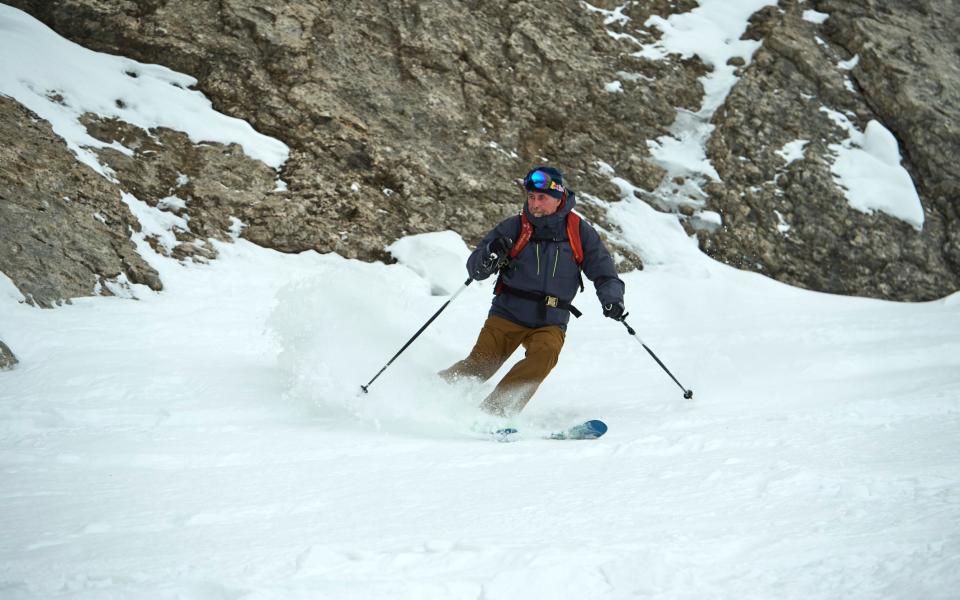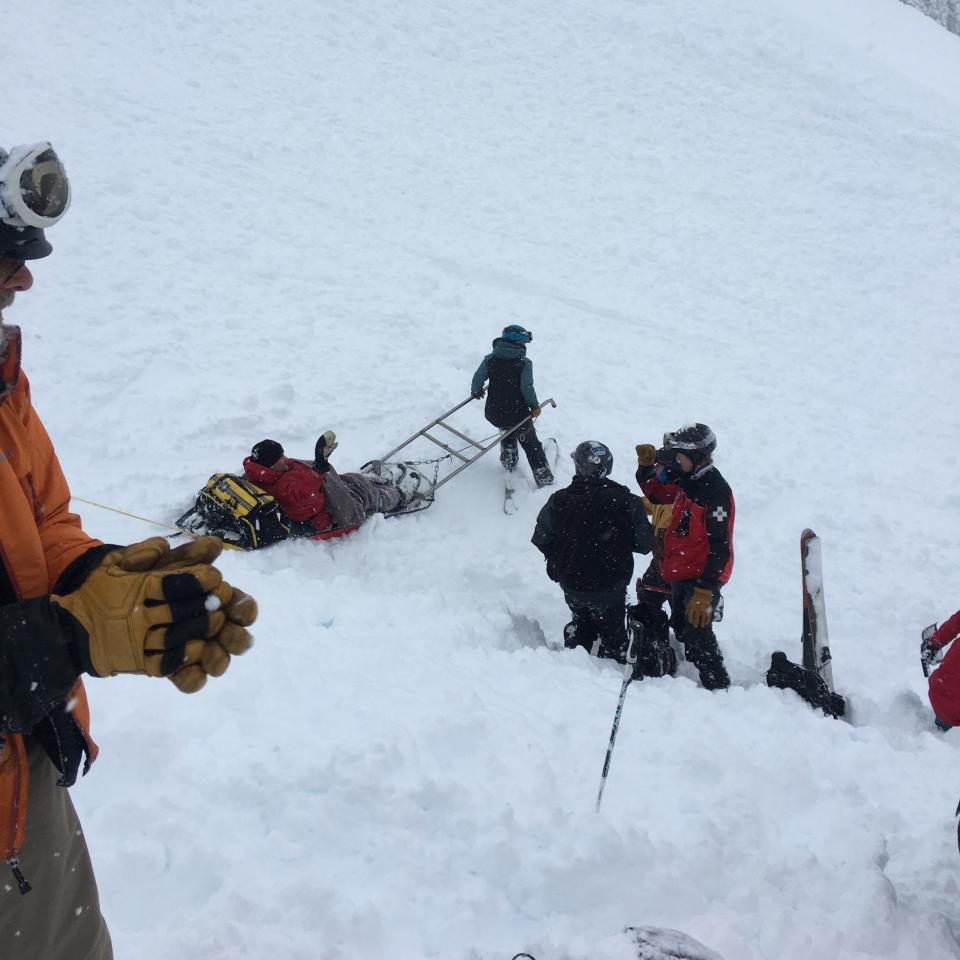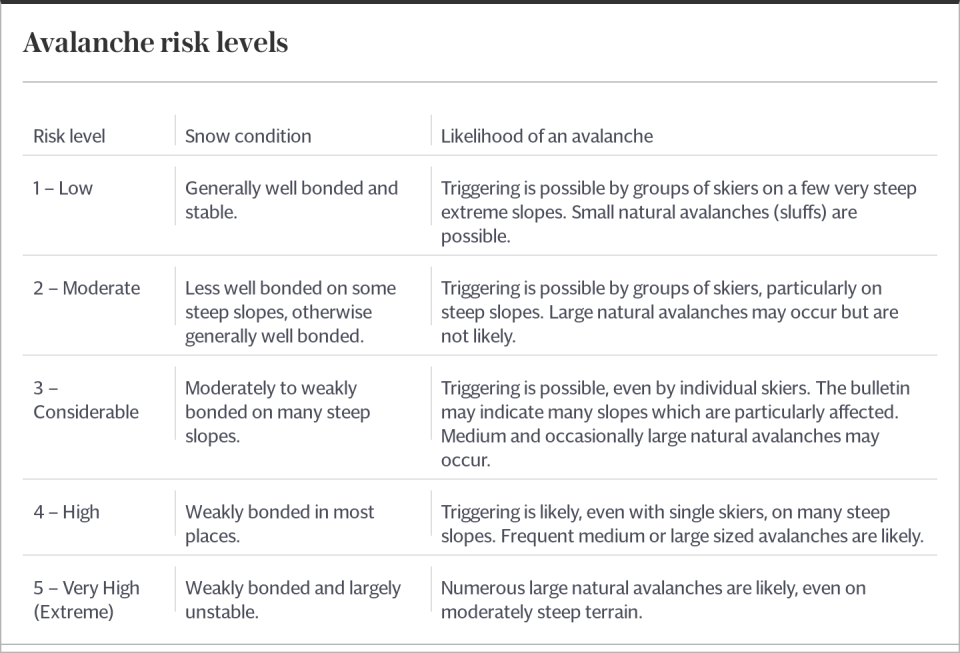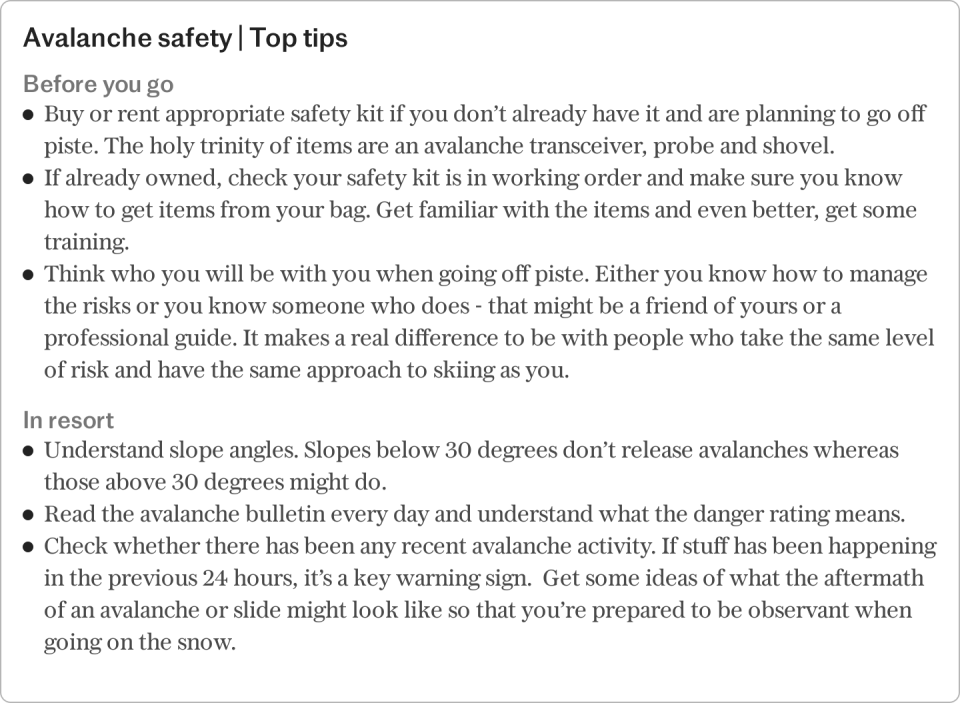In North America, it is generally accepted that skiing within ski area boundaries is safe, but the recent events at Palisades Tahoe – in which three skiers were injured and one died after an avalanche passed through – shows once again that this is not the is the case. always the case.
I was buried 8 feet deep in an avalanche in Idaho for an hour in January 2020, the kind of burial that is not survivable. But somehow I’m still here. I tell people, “You never want to be me.” You never want to be caught in an avalanche, much less be caught in an avalanche without any gear – whether at the resort or off-piste.
Recent events have only reinforced my opinion that skiers in the United States should have a more European attitude and wear avalanche safety equipment, to be adequately prepared for disasters on the slopes – like what happened to me – no matter where you plan to ski . The fact is that despite the heroic efforts of ski patrollers, the risk remains. Mother Nature does not recognize “internal borders,” “side country” or “backcountry” and will do as she pleases, so we need to be more respectful and change our view of the mountains. They are not amusement parks.


Snow blind to the risks
On January 7, 2020, my friend Rebecca and I were planning to ski a little area called Silver Mountain in Idaho. It is not prone to avalanches due to its gentle topography, and I knew it well. So when Rebecca and I left, the excitement was high.
I’ve worked as a ski patroller at Stevens Pass, a mountain in the US with a lot of avalanche activity, and I’ve worked as a ski instructor and industry representative – in short, I know snow. Therefore, I should have known better than to jump straight into the first big storm of the year, not knowing how the snowpack had formed at Silver that winter. But the skiing was so phenomenal, I couldn’t wait. You could say I was snow blind.
That morning the slopes were deep in powder, but after an hour there were no signs of instability, so we joined a group traversing Wardner Peak to a designated area that had just opened for the first time that season. We passed a bomb crater – evidence that avalanche prevention work had been carried out – and I said to Rebecca, ‘The patrol should feel comfortable opening it.’
But when Rebecca turned her skis downhill, the entire traverse started moving. The slab was coming loose all around me – the snow wasn’t moving quickly, but it was deep and laid me on my side. I was sliding downhill like I was in a grade 3 rapid, one minute my head was on the surface, the next minute it was underneath and then back up again. I lay on my side for about 600 feet before I came to rest, with everything intact, even my skis, in a small bowl with no exit.
It was a deadly terrain fall and the avalanche was still coming down: I knew that no matter what I did there was no escape. The snow that followed me piled up over my head.
Buried alive
It wasn’t my first funeral, so when the snow stopped and I could see light, I knew I wasn’t deep. But just 4 inches of snow (dry, powdery snow) is like cement. I could hear Rebecca screaming for me, and somehow I was able to move my hand and create a hole to the surface. I shouted back that I was fine, but as I lay there trying to stay calm, a second slide came loose.
We all know that if the first one doesn’t kill you, the second one will.
As the snow slid over me and my world went dark, I said to myself, “I am a dead man.” Everything stopped and the crushing weight landed on me. If I hadn’t been on my side, the snow would have suffocated me, but my ribcage protected my lungs.
When everything went quiet, I could only move my eyelashes and toes. Some quick calculations told me I wasn’t in a survival situation.
Statistically unsurvivable
According to statistics, 93 percent of avalanche victims can be recovered alive if dug out within the first 15 minutes, but after that the number drops catastrophically. After 45 minutes there is only a 20 to 30 percent chance of survival. I was buried for an hour.
I still had all my gear with me – there was no trail of hat, gloves and sticks leading searchers to me. I had no airbag and, crucially, no beacon (transceiver), because we were skiing within limits. I didn’t even have a backpack with a shovel and a probe. Rebecca was the only one who knew where I was and I had no idea if Rebecca was also stuck under the snow.
Being buried alive is indescribable and overwhelmingly terrifying. The memory flashes back to me even now, four years later. I tried to control my breathing – impossible – to save as much air as possible, but as time ticked away in a distorted way, I thought of my wife and my family and started screaming. I knew it was pointless and a waste of oxygen, but there is terror and then there is uncontrolled terror. I wished with all my being that I would faint and this ordeal would be over.
I started to feel warm and comfortable, the early stages of hypothermia, but then felt something hit my hip. I knew it was an investigation, but nothing. I was convinced they had missed me. But gradually the pressure on my body decreased, the light changed, I could hear sounds and feel the vibrations of digging. I started screaming again and was still screaming after they exposed me.
There were about 40 people searching the hill, and I was found by Joan, Silver Mountain’s 70-year-old part-time ski patroller. I was in 2.8 meters depth and she found me using a 3 meter length of electrical conduit that she had been given as a makeshift probe for the search. It saved me – commercial avalanche probes are only 2.3 meters long.


The aftermath
Seven of us got caught on Silver Mountain that day. Five were completely buried and three died.
Rebecca was carried 20 to 30 feet downhill and buried against her chest. She dug herself out with her bare hands – she also had no backpack or tube. No one realized Molly, one of the three who died, was even missing until they found her car still in the parking lot the next morning. Molly was found more than two days later under at least six meters of snow.
After the avalanche, I was given the physical clearance, although I was warned to expect “some PTSD.” And the trauma is still happening. As I lay buried, I clenched my jaw so hard that my teeth cracked. I have lost one tooth and other teeth are still falling apart one by one. People wonder when the reality of what happened sunk in, but it still sinks in – even now. You just don’t expect to survive.
Would it have been a different scenario if we had had avalanche equipment? Possibly.
Live to ski another day
Now when I see others making reckless decisions in the mountains – skiers going off-piste in Europe, even close to the slopes, or in the backcountry here in North America, without avalanche gear – I want to scream. I am the bridge between the survivors and the deceased; I have a responsibility to educate and raise awareness after what I went through.
We need a more open dialogue between those trying to create a safe riding experience and all of us who use the mountain. For example, it’s great that Brighton Resort in Utah is currently only open to skiers with avalanche gear after a week-long storm cycle. But I worry that liability issues at resorts – which are legally required to ensure that all open areas within the resort are safe for skiing – will prevent these conversations from developing.
Like me – and so many of my friends who have been caught or killed in avalanches before me – you can have all the avalanche training and experience in the world, but ultimately all you can do is avoid an avalanche at all costs. Live to ski another day: have the courage to take the safer route, walk away if you have to. Make the decisions that will get you skiing again. Believe me, you don’t want to be me.
As told to Abigail Butcher
Rules, regulations and best practices vary on both sides of the Atlantic
North America
“In-bounds skiing” everything within the boundaries of the resort is “snow safe” – avalanche monitoring and stable snow. Still expect some areas to be cordoned off and closed, especially after a storm or when snowpack is thin. It does not mean that a double black diamond is safe for a beginner, but that wearing avalanche beacons and a carrying kit is not mandatory. Resort owners are responsible for the safety of skiers, aside from collisions.
“Off-piste” in the US and Canada, confusingly for Europeans, means off-piste, but within resort boundaries and is still considered “safe”. Resort owners are responsible for the safety of skiers in these areas, aside from collisions.
“Backcountry” (also called side country/slack country) means outside the designated resort boundary. They are accessible via gates and skiers are responsible for their own safety. Avalanche beacons, equipment and mountain guides are not required by law, but it is unwise to ski without them.
“Ski patrols” operate only within the resort boundaries, securing snow and preventing accidents. If something goes wrong in the backcountry, skiers must rely on the goodwill of ski patrols and/or local volunteers/rescue services, which vary from state to state.
Europe
“On-piste” means safe, groomed and surrounding snow that is secured for skiers traveling within the piste markings. It is not mandatory to wear avalanche transceivers and to take a rescue kit with you. Resorts are responsible for skier safety, aside from collisions.
“Off-piste” is the area outside the marked pistes, which is entered at the skier’s own risk, even if it is only 1 meter from the piste. Avalanche beacons, equipment and mountain guides are not required by law, but it is foolish to ski off-piste without them.
“Backcountry” is an American term that is increasingly used in Europe to describe off-piste areas further away from the resort. The same rules for off-piste skier responsibility apply.
“Ski patrols” work within the resort to secure snow and manage accidents on the slopes and in off-piste areas within the ski area. Further away from the resort boundaries, mountain rescue/helicopter services are available for accidents and emergencies.




Recommended
How to stay safe from avalanches while skiing
read more